Knight to import budget Belgian sprayers and cultivators
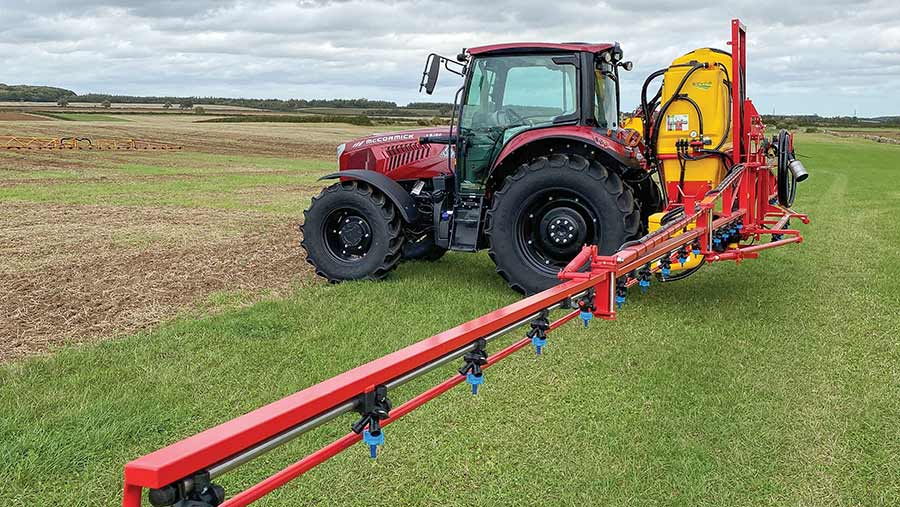 The Beyne PA © MAG/Oliver Mark
The Beyne PA © MAG/Oliver Mark Knight Farm Machinery is to import four low-cost sprayer models from Belgian maker Beyne that will supplement its current line of comparatively high-tech mounted, trailed and self-propelled machines.
Dubbed the Red Line, they are easily identifiable by their vibrant red and yellow livery – a stark contrast to the mustard-and-white finish of sprayers made in Knight’s South Luffenham factory.
See also: Driver’s view: Andrew Manning’s Knight 1840
And while the Rutland-based manufacturer’s existing mounted range runs from 1,300 to 1,900 litres, Beyne’s models start at a modest 600-litre capacity and run to 1,800 litres.
Like-for-like, the newcomers are reckoned to be about 30% cheaper.
The smallest, simplest and lowest-priced Red Liner is the £15,500 PA.
This is available with a 600- or 1,000-litre tank, a manual folding boom of between 12m and 18m, and a simple switch box to control pressure and spray on/off.
Making the £7,500 step up to the PLS brings slightly more sophistication, with hydraulic folding of the 15-18m suspended boom and the options of electric controls and a bigger 1,200-litre tank.
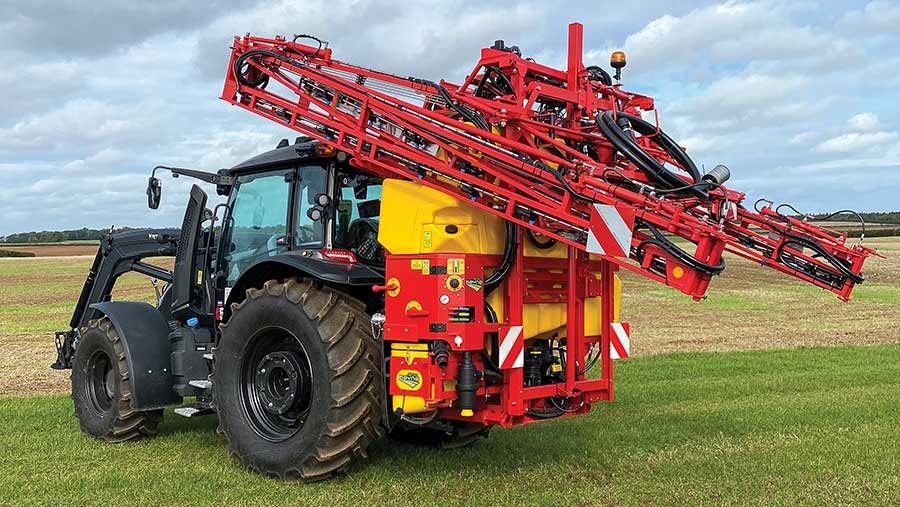
Gecko models are isobus- and GPS-compatible © MAG/Oliver Mark
Isobus- and GPS-compatible Gecko variants are more professional, with the simpler of the two on offer – the PLK – providing a 1,500-litre capacity and a 21-28m side-folding and suspended boom with Knight’s Maximiser circulation system.
Prices start from £36,000.
At the apex of the range is the £57,000 rear-folding RF, which gets a bigger 1,800-litre tank and both individual section and automatic height control.
Muller spray systems are standard across the board, and all models are also available with Beyne’s front tank which, like the sprayers, is cheaper and simpler than Knight’s own version.
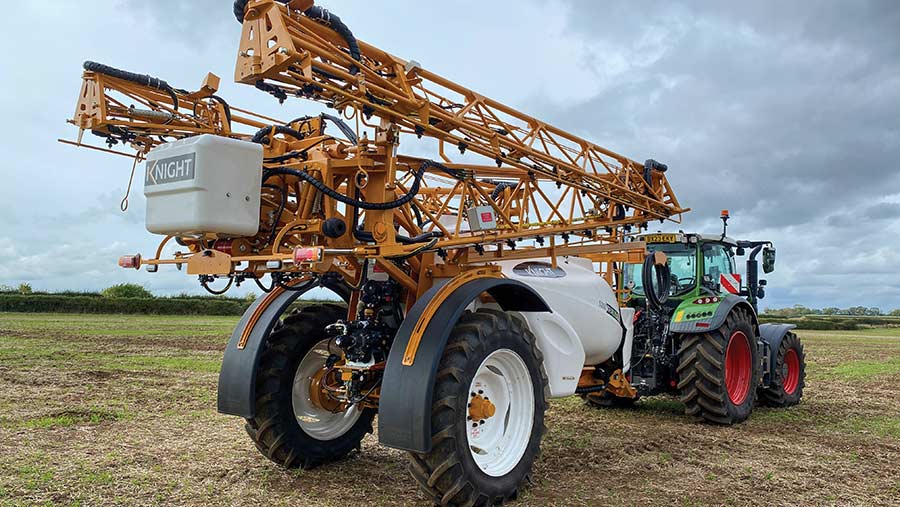
Knight Trailblazer © MAG/Oliver Mark
Bigger Trailblazers
With the Beyne deal taking care of the cheaper end of the mounted sprayer market, Knight’s design team has centred its efforts on extending the trailed Trailblazer offering.
This currently contains a handful of models running from 3,600 to 6,000 litres and 20 to 40m, but the company expects an uptick in demand for higher capacity machines – something already offered by big European manufacturers such as Horsch and Amazone.
There will be four new variants, the more sensibly sized of which will come with 7,000- and 8,000-litre tanks and a single axle as standard.
However, there will be the option of a second air-suspended axle, which may be required by some buyers to conform with road rules when transporting a full load of liquid fertiliser.
The newcomers will be available with booms from 24m to 40m, all specced with the firm’s 4D suspension system and single-nozzle switching.
Above these come 10,000- and 12,000-litre Trailblazers, which see the plastic tank switched for stainless steel and a tandem axle fitted with Muller’s automatic control system to help steer it neatly and minimise crop damage during headland turns.
The extra capacity on all four new models has necessitated a few design tweaks, including a revised closed boom position to lower the centre of gravity, an updated induction area and uprated, air-braked axles.
They will also come with Knight’s Maximiser Pro boom circulation system.
This has 21% less pipework than before and maintains constant, even pressure by feeding the booms at multiple points to eliminate the risk of product settling in the plumbing system and ensure nozzle response is immediate.
Return to cultivators
Knight officially still offers its own range of cultivators that includes the Triple Press tillage train and tine-and-disc Raven.
However, without the capacity to develop, market and build the implements alongside its extensive sprayer line-up, orders have gradually dried up and the designs have been effectively mothballed.
The company also had a short-lived import deal with Czech cultivator maker Bednar, which ended in 2016.
But tillage equipment – power harrows and compact discs, to be precise – is now back on the menu as a result of the Beyne tie-up.
Both implements originate from Vogel & Noot, with Beyne having nabbed the cultivator blueprints – along with the land, buildings and spare parts factory – from the embers of the Austrian company when it went bust in 2016.
At the same time, German manufacturer Amazone bagged Vogel & Noot’s plough range and its Hungarian production facility.
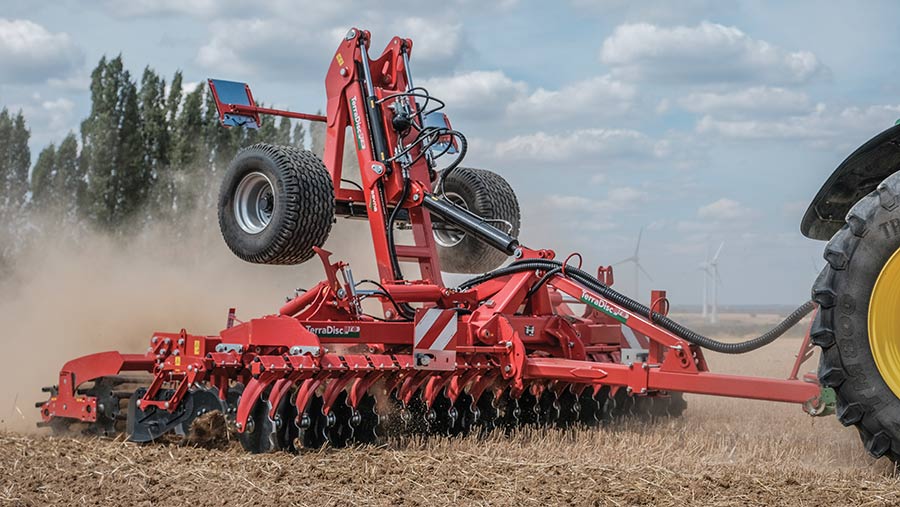
Terradisc Pro © MAG/Oliver Mark
The Terradisc compact cultivator line-up encompasses mounted models from 2.5m to 4m and trailed Pro versions in 4m, 5m and 6m widths.
These feature two rows of 510mm scalloped discs that are clamped to the main frame on rubber sausages to provide a degree of suspension. Bigger 560mm discs are available as an option.
Working depth is set using aluminium spacers on the hydraulically controlled packer, of which there are several variations including a tubular cage, open ring, and toothed or crumbler roller.
The 3m rigid frame model weighs about 2t and costs £24,500; the hydraulic folding 6m version is listed at £55,000.
There is also a pair of 3m, 12-rotor Beyne power harrows in the portfolio – the MS (for 130-180hp tractors) and Grip (170-230hp).
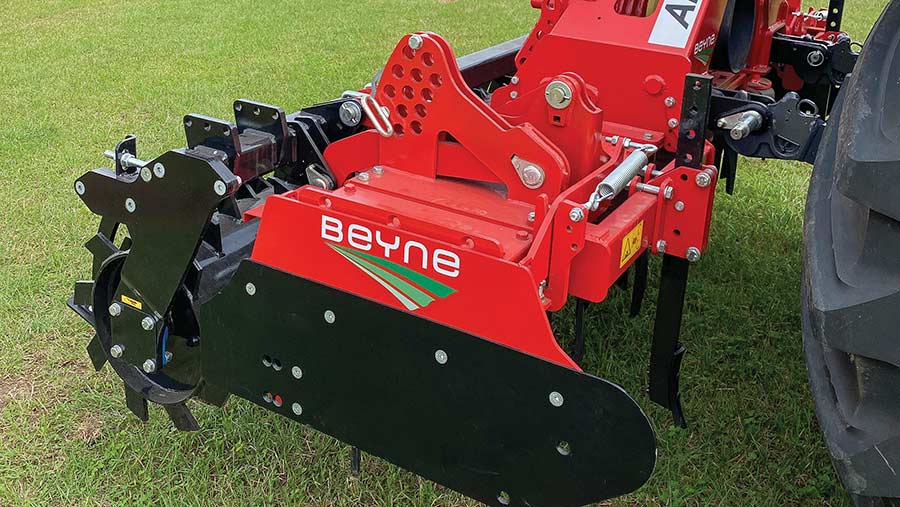
Grip power harrow © MAG/Oliver Mark
The only significant difference between the two is the double-sealed rotor shafts, which are 50mm and 60mm, respectively.
This makes the Grip variant about 100kg heavier, at 1,580kg including the packer roller.
Mounting points on the back allow for the fitment of a piggyback seed drill.
The MS is priced at £16,500 and the Grip is £21,000.
